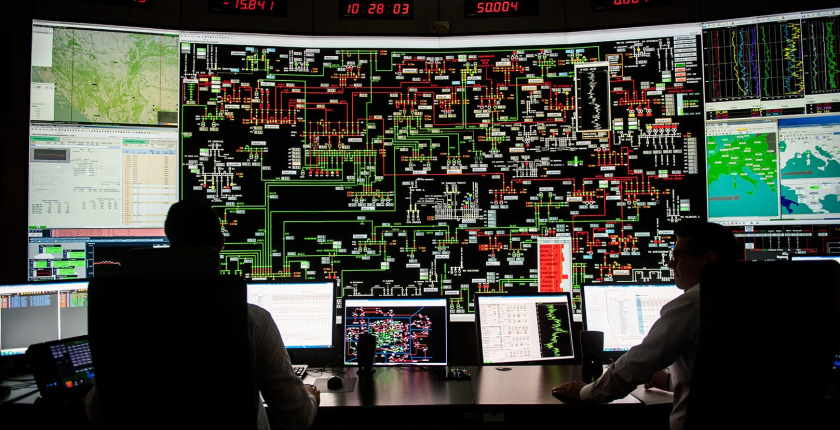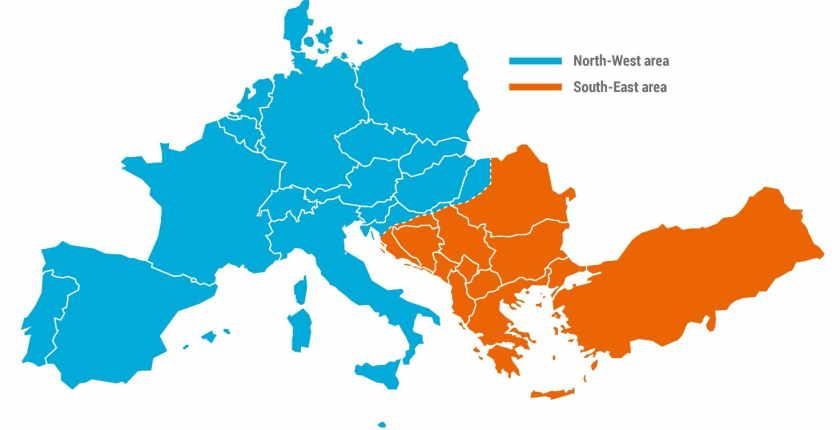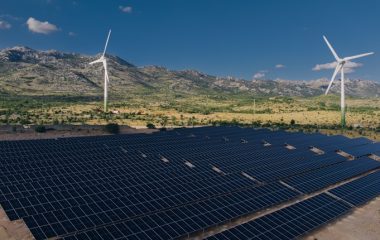
Photo: Elektromreža Srbije (EMS)
After the Continental Europe synchronous area broke down and split into two grid regions in January, resynchronization actions were performed by transmission system operators HOPS (Croatia), EMS (Serbia), NOS BiH (Bosnia and Herzegovina), and Transelectrica (Romania), according to the ENTSO-E Interim Report.
In its two previous updates, the European Network of Transmission System Operators (ENTSO-E) said that a malfunction in Croatia’s substation Ernestinovo was the initial event that led to a split into two grid regions of the Continental Europe synchronous area on January 8, from 14:05 to 15:08 CET. The event led to a decrease in frequency in the North-East area and an increase in frequency in the South-East area, and the disconnection of 233 MW of supply to customers.

The hotlines started ringing…
At 14:05 on January 8 the system separation caused large steady-state frequency deviations within the two disconnected islands of the Continental Europe Synchronous Area.
At 14:08 CET, Serbia’s TSO Elektromreža Srbije (EMS) called Croatia’s TSO Hrvatski Operator Prenosnog Sistema (HOPS): both TSOs confirmed a system separation. After a data analysis, the points of separation were assumed to be in the grids of HOPS, EMS, Transelectrica, and NOS BIH, the report reads.
The control areas with an overfrequency are highlighted in red. A separate island comprising TSOs HOPS, Transelectrica, NOS BIH, EMS, ESO (Bulgaria), MEPSO (North Macedonia), OST (Albania), and IPTO (Greece) can be identified (the coloring of OST is not correct), the interim report reads.

The TSOs of the South-East area (EMS, HOPS, NOS BiH, MAVIR, ESO EAD, IPTO, and Transelectrica) had a phone call with a briefing about the state of each TSO system. The affected TSOs (EMS, HOPS, NOSBiH, and Transelectrica) exchanged information about tripped elements in their networks in order to determine the line where the two parts of the Continental Synchronous Area had separated.
EMS coordinated frequency regulation
The system operation of Transelectrica was largely influenced (significant challenges in both transmission and distribution grids, especially because the grid had to be operated for the two separated areas), and the TSO could not comply with the resynchronization leader’s condition.
Consequently, frequency regulation was done under the coordination of EMS with all the other TSOs in the South-East area.
EMS agreed with ESO EAD, IPTO, HOPS, NOSBiH, and Transelectrica to reduce production at their power plants (Transelectrica did this in the higher frequency part of the grid only). Furthermore, EMS asked ESO EAD to call TEIAS to request that it also decreases production, which TEIAS agreed to do.
Croatia acted as the resynchronization leader
The actions which allowed the resynchronization can be grouped into preparatory actions and resynchronization sequences.
During the preparatory actions, EMS, HOPS, and NOSBiH agreed to form three strong reconnection points, which could then be used for the resynchronisation sequence. The resynchronisation process was further supported by a relief of the load flow situation through an increase of power flow on the DC Link Monita between CGES (Montenegro) and Terna (Italy), which changed its flow in the direction of Montenegro to Italy from 100 MW to 600 MW.
EMS, HOPS, and NOSBiH formed three strong reconnection points
The resynchronization process started with HOPS (Croatia) acting as the resynchronization leader, the report reads.
To ensure the success of the resynchronization plan, EMS and HOPS kept an open line during the resynchronization sequences of the first three points.
Further reconnections were then performed on the other disconnected transmission lines in a coordinated manner, according to the interim report.
The report is to serve as a basis for further investigation by an Expert Panel which will prepare a Final Report according to the ICS Methodology for scale 2 incidents.


















Be the first one to comment on this article.